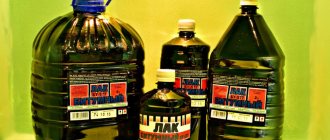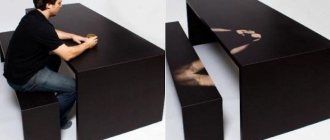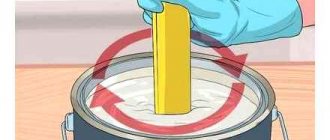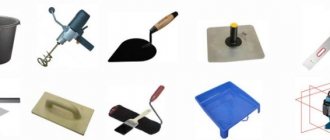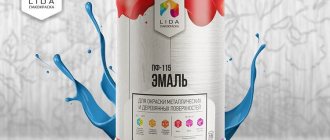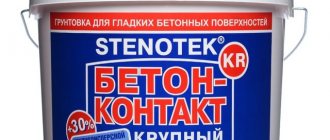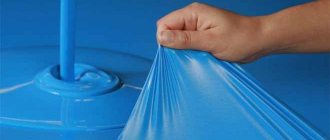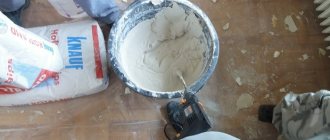Basic properties
The polyurethane varnish layer significantly extends the service life of the wood, and also emphasizes the natural pattern and texture of wood, such as parquet, or other material. The polyurethane type of varnish has much higher protective characteristics compared to other varnish solutions. After the surface is treated with this composition, a high-strength film is formed on it, which will provide the tree with reliable protection from mechanical damage, exposure to water, the negative influence of the atmosphere, the spread of rot and the proliferation of microorganisms.
Polyurethane solutions are often used to treat concrete and parquet floors. The characteristics and purpose of the varnish depend entirely on the components of which it consists. The polyurethane mixture significantly increases the performance properties of the treated surfaces, as a result the base becomes very durable, moisture-resistant and resistant to the harmful effects of abrasive elements, acids and all kinds of petroleum products.
Popular products
One of the varnishes used by Russian consumers is PF-231, a domestically produced varnish. Despite the simple composition, the coating after applying this alkyd varnish looks neat, and the resulting film has high protective properties. But the service life of this material is short.
More popular is varnish of the MCh-0163 brand, which is not afraid of moisture and mechanical stress. But the film it forms does not have sufficient elasticity, and the material itself is not resistant to ultraviolet radiation. In addition, this type of varnish emits a pungent odor when working with it.
Related article: How to choose parquet varnish and what types does it come in?
Protective aerosol varnish is resistant to weather conditions. This product is used as a protective varnish on the surfaces of wood, metal, glass, stone, plastic and other materials. This aerosol varnish is easy to apply and quickly spreads over the surface.
Varnish with a one-component composition EP-2146, in which epoxy resin serves as a modifier, has good performance characteristics. This material is used to cover parquet, veneer, fiberboard, chipboard and plywood. Apply in two or three layers, each of which must dry completely before applying the next. The drying time is fully compensated by the long service life of the varnished surface, which becomes extremely durable.
Advantages and disadvantages
The polyurethane type of water-based varnish, in comparison with other paint and varnish products, has the following advantages:
- can be applied to almost any material and any type of wood, including pine, maple, beech and hardwood;
- the application process is very easy and quick;
- the protective layer does not require any special care after drying;
- the dried varnish film is resistant to water and all kinds of household chemicals, so you can carry out wet cleaning without fear;
- The varnish layer after drying is elastic, therefore, with minor deformations of the floor, cracks do not appear on the polyurethane varnish;
- resistant to mechanical stress and abrasion;
- withstands temperature changes without problems;
- long service life of the protective coating;
- high strength index;
- resistance to any precipitation and sunlight.
Despite these advantages, polyurethane wood varnish has the following disadvantages:
- some types of polyurethane varnishes contain organic solvents, which is why these mixtures have an unpleasant odor, and they are also unsafe for humans and are not environmentally friendly;
- if you buy a cheap polyurethane-based varnish of low quality, then after some time it will lose its original appearance and may turn yellow;
- high-quality mixtures are usually quite expensive;
- If you incorrectly apply a polyurethane composition to wood, for example, to parquet, then various defects may be visible on the floor.
Pros and cons of polyurethane varnish
pros
1. Good adhesion. The varnish adheres firmly to the surface and does not peel off even when applied to a polished base.
2. Resistance to abrasion and mechanical damage. The varnish is impact resistant and retains its original appearance for several years.
3. Resistance to aggressive environments. Products coated with polyurethane varnish can be cleaned using household chemicals.
4. Moisture resistance. Polyurethane varnish reliably protects wood from moisture penetration and swelling.
5. Fast drying. The varnish dries almost completely in 2-3 hours, drying takes a maximum of 8 hours. 3-4 days after application, the surfaces can be subjected to mechanical stress - they are reliably protected.
6. Eco-friendly. The varnish contains no toxic elements, so it is absolutely harmless to people and animals.
7. Cost-effective. The varnish is used very sparingly. To obtain the desired effect, it is enough to apply 1-2 layers.
Minuses
1. Over time, polyurethane varnish turns yellow.
2. If alcohol-containing liquids come into contact with the varnish layer, difficult-to-remove stains may appear.
Varieties
All polyurethane varnishes, according to their classification, can be divided into two-component compositions and one-component, ready-to-use solutions.
- The one-component polyurethane varnish is water-based and comes ready for application. A roller or paint brush is used as an application tool. The water-based composition can be applied to wood; this mixture is environmentally friendly and safe for humans because it does not contain organic solvents. This varnish does not emit any odor or toxic components when applied. Stores sell one-component polyurethane mixtures for wood in the form of aerosols supplied in cans. Thanks to spraying, you can very easily and quickly treat hard-to-reach areas or small wood products. Single-component aerosols dry very quickly on the surface.
- Two-component varnishes are not supplied ready for application. You need to prepare the solution yourself by mixing the base with the hardener. The components must be mixed immediately before starting varnishing. Two-component polyurethane varnish for wood has higher technical characteristics than a one-component solution.
It is important to remember that the prepared two-component composition can only be used for a short period of time, usually within 4 hours.
Types of varnishes for metal
Let's look at the most popular types of varnishes for metal processing.
Bitumen varnish
Since we have already mentioned bitumen, let's start with it. This is a relatively new type of varnish mixtures. It is produced on the basis of a special grade of bitumen and polymer resins mixed with organic solvents and additives. It has excellent physical, mechanical and operational properties. Designed to protect the surface of metals, stone, wood.
Although the resulting black protective film is durable and resistant to external influences, manufacturers suggest using varnish as a temporary rather than permanent solution, that is, during storage and transportation of products.
Bituminous varnish has the following characteristics:
- environmentally friendly;
- porous structure ensures frost resistance;
- lasting;
- elastic;
- heat resistant;
- weatherproof;
- resistant to acids and alkalis;
- has antiseptic properties.
Bituminous varnish is inexpensive, but of sufficient quality. Today, materials in this category are becoming increasingly in demand.
Bituminous varnish has a dark tint due to the resulting black film
Polyurethane varnish
Available in: transparent, glossy, matte. The substance contains modern polymers (polyurethane). Has excellent performance characteristics. Anti-corrosion polyurethane solution is used as a protective finishing coating for the internal surfaces of tanks made of steel, cast iron, aluminum, copper and their alloys.
Polyurethane varnish is also suitable for household use when performing interior or exterior finishing work. Easy application, quick drying, no smudges. Atmospheric temperature threshold during work: from -30°С to +60°С.
Characteristics of polyurethane varnish:
- excellent adhesion;
- wear-resistant;
- heat-resistant (temperature range during operation from -60°C to +80°C);
- durable, stable, elastic coating;
- moisture resistant;
- chemical inertness;
- weather resistance;
- long-term trouble-free operation of the coating and the product itself (minimum 10 years).
Polyurethane varnish can be used for interior and exterior finishing work
Transparent polyurethane varnish can be mixed with pigment (to obtain a colored decorative protective layer). Can be used as a base (finish) coating or to protect metal before painting.
Acrylic lacquer
Used to protect products made of ferrous and non-ferrous metals and their alloys. The coating dries very quickly, forming a durable waterproof film on the surface. Among the recommendations for use, we highlight: suitable for metal surfaces that are constantly exposed to conditions of high humidity and high temperatures.
The varnish is based on an aqueous dispersion of acrylic resins. It is recommended to apply using a spray (as an aerosol) or a paint brush. Can be used for external and internal work. Many automotive paint and varnish products are also produced on the basis of acrylic resins.
Characteristics of acrylic varnish:
- heat resistant;
- moisture resistant;
- has good adhesion;
- anti-corrosion properties;
- not affected by salts, oils;
- forms a strong, elastic film that can withstand mechanical loads;
- non-toxic;
- fire and explosion proof;
- extends the service life of structures made of steel and other metal alloys.
Types of shine and color
Polyurethane varnishes have different degrees of gloss; there are the following types of compositions:
- glossy;
- semi-gloss;
- semi-matte;
- matte.
The technical characteristics of the protective layer do not change depending on the type of gloss. It is worth considering that on glossy wood, for example, parquet, damage, small defects and scratches that occur either when the composition is applied incorrectly or during operation are much more noticeable. If you need to cover a base that will be exposed to chemical and mechanical stress, then it is advisable to apply a matte varnish.
Most often, a transparent polyurethane varnish is made, but stores also sell tinted modifications of oil-based compositions. Colored mixtures simultaneously varnish the surface and act as a stain. Such compositions are made in accordance with the shades of natural wood. But if the client does not find a suitable color in the existing palette, then the manufacturer offers tinting in the required shade.
Area of use
In addition to applying to wooden surfaces, polyurethane composition can be used to protect the following materials:
- ceramic tiles, on which the varnish creates a thin transparent film;
- impregnation of concrete, brick surfaces, as well as slate;
- protection of ceilings, walls and floors made of any materials;
- treating the stone with a transparent varnish to obtain the effect of a wet surface;
- application to mineral substrates to reliably protect them from destruction;
- parquet flooring, in order to improve its appearance and protection;
- coverings of wood furniture, as well as stairs, and other structures, to protect against the negative effects of chemicals and mechanical stress;
- application on various metals, concrete surfaces, stone, varnish on these materials protects them from destruction.
One-component and two-component types of polyurethane varnish are used when performing external and internal work, used in domestic conditions, in industry, and also to protect plastic surfaces.
Overview of varnishing compositions
Polyurethane based varnishes
Among the entire range of coatings that are used to protect and decorate wood, varnishes based on liquid polyurethane occupy one of the most voluminous niches. And this is understandable, because products made from natural wood, be it furniture, parquet or parquet boards, are quite expensive, and therefore their owners strive to protect them as much as possible from external influences.
This is where the main properties of polyurethane appear:
Container with varnish
- Firstly, the liquid composition (most often varnishes are water-based) is easy to apply and penetrates deeply into the thickness of the wood fibers.
- Secondly, after polymerization, a dense film is formed on the surface of the wood, which minimizes the contact of the wood with the external environment.
In addition, the argument in favor of choosing polyurethane varnishes is the variety of their modifications:
Based on their composition, there are one- and two-component products. And if the former can be used immediately after opening the container, then the latter must be prepared for work by mixing the polyurethane base with a hardener.
Two-component composition: base + hardener
Based on the appearance of the coatings, glossy, semi-matte (satin) and matte varnishes are distinguished. The first two varieties are most often used when decorating, but a matte finish is usually used for varnishing parts that are subject to maximum functional load.
Photos before and after treatment with the composition
When choosing a varnish, you should pay attention not only to its external characteristics, but also to the design load resistance. So, if you are varnishing the floor in a private house or apartment, then the basic varieties will suit you, but when decorating public buildings with high pedestrian activity, it is worth purchasing a more abrasion-resistant material. Also, in some cases, the dielectric characteristics of the varnish layer will be important.
Of course, a varnished floor should not be considered as complete insulation, but in any case, the conductivity of wood (even wet) will be reduced. Finally, self-leveling compounds for wooden floors can be found from many manufacturers. It should be noted that the price of such varnishes is slightly higher than that of standard modifications, but applying them by pouring is much less labor-intensive.
Advantages and disadvantages
Like any finishing material, polyurethane varnish has both advantages and disadvantages. You can evaluate them and analyze the factors that are most important to you using the table below:
Moisture resistance of the coating is one of the obvious poles
| Characteristics | |
| pros |
|
| Minuses |
|
As for the last drawback, it can be completely compensated for by strictly following the recommendations for applying varnish with your own hands. The next section will be devoted to these recommendations.
Application rules
Different polyurethane-based varnish has different application features, because different solutions have their own characteristics. As an example, we will consider the process of applying polyurethane varnish to wood, for example, parquet. There are three ways you can use polyurethane composition:
- Before applying varnish, wood parquet or other product can be coated with stain. This mixture will make the tree the desired color and provide additional protection. You can apply not a stain, but a two-component polyurethane type of varnish that has an oil base;
- before using varnish, you can apply a layer of primer to the parquet;
- You can apply the polyurethane composition directly to cleaned wood in several layers, without using any other mixtures.
One-component and two-component varnishes have certain differences in application, but working with them also has something in common - the base must first be carefully prepared. The surface is cleaned of old paintwork or other material, if any. This can be done with a solvent, mechanically or using an electric sander.
Before applying a polyurethane type of varnish, be sure to repair all cracks, chips, and other defects on the surface. To achieve the smoothest possible finish, the parquet is processed using sandpaper.
Reasons for varnishing
The market for modern materials is filled with various materials for floor finishing.
But wooden floors always remain a classic option, and it’s quite difficult to compete with them. After all, wood is distinguished by its warmth and naturalness of color and pattern, aesthetics and the ability to be used in any interior. But such floors are quite difficult to maintain and require additional protection. Such protection is provided by polyurethane varnish, which is used due to the properties of wood, such as:
- Water permeability. Water is the main problem for boards. It can penetrate into the material, and then, gradually evaporating, change the geometry of the material and its individual elements, and disrupt the structure. Boards can swell and dry out when exposed to moisture. After applying a protective layer, this problem disappears.
- The use of natural wood in flooring can attract rodents and bacteria. The use of varnish makes this danger minimal.
- Varnished boards become more resistant to damage and stress.
- The varnish protects the floor boards from dirt and makes them easier to maintain.
- The use of varnish helps highlight the natural patterns of wood, exposing them to a favorable light and shading it. It also allows you to fix the wood pattern, which will not be subject to abrasion.
Application of one-component varnishes
After the surface has been prepared, the varnish mixture is applied using a brush, roller or spray. If the spray method is used, it is advisable to first dilute the polyurethane mixture with a solvent, strictly in accordance with the instructions. You cannot add more than 5% of the solvent volume of the varnish composition.
If the base was previously coated with primer or stain, then the varnish can be applied in two layers. But if no material was previously applied to the wood, then the polyurethane mixture must be applied in at least three layers. Allow the previous coat to dry completely before applying each subsequent coat, which usually takes about 6 hours. Under normal conditions the coating hardens completely after approximately 12 hours.
Work technology
The choice of a suitable type is determined by the nature of the surface to be covered and its size. It is better to clean the original surface from dust and dirt, and carry out work in the absence of drafts.
Aerosol form
The type of varnish determines the labor intensity of the work. It is best to treat small objects using aerosol varnish. According to the instructions, the spray is applied to the surface, after which it is maintained for an hour at constant temperature and humidity.
To ensure uniform subsequent drying of the final coating, the spray flow is directed evenly and at approximately the same speed. Since the consumption of the composition for a spray will be increased, you should stock up on an additional can of spray from the same batch.
Application by roller or brush
Working with one-component or two-component polyurethane varnishes is somewhat more difficult.
To facilitate the work of applying the coating, it is better to dilute the one-component composition with a solvent, and when using a roller or brush, its amount cannot be more than 4-5% of the volume of the main component. The final consistency should be convenient for varnishing. It is better to apply a two-component varnish only using a soft roller - such a tool works faster, and the prepared but not applied composition will not have time to set.
Remember: a second attempt to use an already solidified mass, even if diluted with a solvent, will be unsuccessful.
The second layer is not applied immediately, but after the previous one has completely dried. The properties of the coating do not improve with multi-layer varnishing, therefore repeated coating of the surface with water-soluble polyurethane varnish is not carried out.
Which application technology to choose depends on the properties of the product itself: for example, for a self-leveling composition, the duration of the time interval between varnishing is not particularly important. At the same time, in other cases, the final surface may be uneven; it will need to be cleaned with emery cloth, which means you will have to forget about the glossiness of the coating.
When choosing which varnish is best to use, it is worth remembering that the polyurethane coating turns yellow over time. In addition, when finishing wooden flooring in children's rooms, it is better to use other, more environmentally friendly types of varnishes with the same properties
They also pay attention to the initial viscosity of the composition: the usual norm is from 30 to 75 centistokes, with higher values corresponding to glossy brands
Application of a two-component composition
Before applying a two-component varnish mixture, it must be prepared. To do this, the base is mixed with a hardener. After mixing, the solution must infuse, this requires about 20 minutes, during which time air bubbles are removed from it. After this time, the polyurethane varnish for the floor or other surface is completely ready; it is recommended to apply it no longer than 4 hours in advance, stirring occasionally so that it does not harden. The next day it will no longer be usable.
The varnish solution is applied in the direction of the wood fibers in several layers, the recommended number of layers is from 3 to 8. Each previous layer should dry for about 2 hours. To make polyurethane varnish for parquet perfectly transparent, the final layer is treated with a special paste.
Recommendations
Before applying any type of polyurethane varnish solution, you should carefully read the instructions for its use. It is necessary to work with the composition at a temperature of no more than 25 degrees, however, some types of mixtures have different requirements for air temperature.
If one of the components of the mixture is an organic solvent, then this composition must be applied only in a respirator, and in a room where high-quality ventilation is organized. If the application process is carried out with a roller, then it is necessary to make crosswise movements, in which case the mixture will be evenly distributed over the parquet or other base, and there will be no streaks. If you are treating parquet or a floor made of another material, then you need to apply the composition from window to door.
How to choose and how to use
Before making a choice in favor of one or another varnish composition for metal, you need to take into account a large number of factors. When selecting a suitable coating, you can use the following recommendations:
- You should study the range of mixtures for processing metal coatings. Each type of varnish composition will have certain features and technical properties.
- The scope of application of the paint and varnish material should be taken into account, and mixtures for outdoor work must have excellent resistance to moisture and temperature changes.
- Required coating color. On the modern building materials market you can find not just transparent varnish compositions for metal surfaces, but also pigmented options.
- Desired gloss level of the finished coating. Matte surfaces are much easier to care for. A glossy finish will look more attractive, but is not very practical, as it is susceptible to various stains and scratches, which will be clearly visible on the shiny surface.
And now some advice.
Recommendations from experts
Here are some tips:
- In order for the varnish composition you have selected to meet all the stated characteristics and make it possible to form a durable, durable coating, you must be sure to read the instructions for applying the composition. Each type of metal varnish requires special application recommendations.
- The preparatory process for a metal surface before starting work will not depend on the specific type of varnish composition and will primarily involve a good cleaning of the base. The metal structure will be cleaned of dirt, dust and rust, and then everything should be degreased. You can apply the varnish composition using a paint brush, spray can or spray gun (if you bought an aerosol).
- Typically, a solution for metal is applied in three layers, and after applying a further layer, you need to take a break so that the previous layer dries. Drying time should be checked on the packaging of the material.
